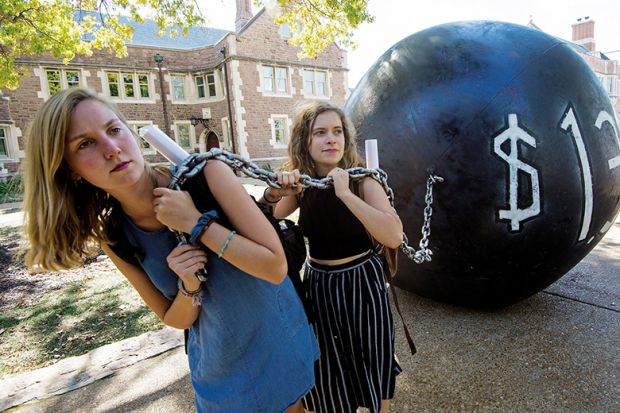The US student debt crisis may be easing on some levels, as new annual government data show a seven-year low in the share of former students not keeping up with their education loan payments.
The figures from the US Department of Education show that its latest cohort default rate – a measure of borrowers not making payments on their federally subsidised student loans within three years of leaving post-secondary schooling – was 10.1 per cent for those who finished their studies in 2016.
That’s down from 10.8 per cent for the 2015 grouping and the lowest such rate since the department began compiling the statistic with students leaving their schooling in 2012.
The improvement, analysts said, was largely due to the Obama-era crackdown on for-profit institutions, which accounted for a vastly oversized share of student loan defaults, and many of which have been forced out of business by regulatory and market pressures.
That positive development, said one leading group, The Institute for College Access and Success, was countered by realities that include the Trump administration’s ongoing efforts to help revive the for-profit sector, and the disproportionately difficult conditions still facing non-white and other disadvantaged students.
Low-income students, black students and students who are single parents faced at least twice the average risk of defaulting on their student loans within 12 years of leaving college, Ticas said.
“The most recent evidence suggests some small but positive trends,” said the group’s president, James Kvaal. “Still, with millions of students in default and many more owing more than they borrowed, things are not great.”
Especially concerning, he said, were moves by Betsy DeVos, the US secretary of education, to deregulate for-profit colleges and the “apparent rebound in investor interest there”.
The Department of Education issued the data without comment on possible causes of the lower default rate. Its figures, however, made clear the role of the for-profit sector. Of the 15 institutions with average default rates so high among their students that they face a legal prohibition on further participation in federal student loan programmes – 40 per cent or more for one year, or 30 per cent or more for three years – all but two are for-profit institutions, most cosmetology or barber schools.
The only public member of the list is the long-struggling Denmark Technical College, a two-year institution that is South Carolina’s only state-supported historically black technical college. Its enrolment of about 500 students is less than a quarter of its 2008 levels.
Mr Kvaal’s group issued its own annual report on student debt a week earlier, showing that the average debt levels of US college graduates were still rising, although at a slowing rate. A US bachelor’s degree now comes with a record-high average of $29,200 (£23,600) in student loan debt, Ticas found.
The leading lobbyist for US colleges and universities warned, however, that average debt levels and default rates weren’t necessarily good measures of whether college students were getting a good deal.
At a time when Americans faced a total of $1.6 trillion in student loan debt, the problem was clearly serious, said the lobbyist, Terry Hartle, the senior vice-president for government and public affairs at the American Council on Education. But the best indication of trouble – if such a statistic existed – would be the number of borrowers who were facing unreasonably burdensome debt levels, Dr Hartle said.
The education department likely has the ability, by using federal tax and earnings data, to create such a measure of “the extent to which the amount you borrowed encumbers your income”, Dr Hartle said. But it hasn’t, he said, leaving higher education with imperfect measures such as default rates, which have historically been subject to some levels of manipulation by institutions.




